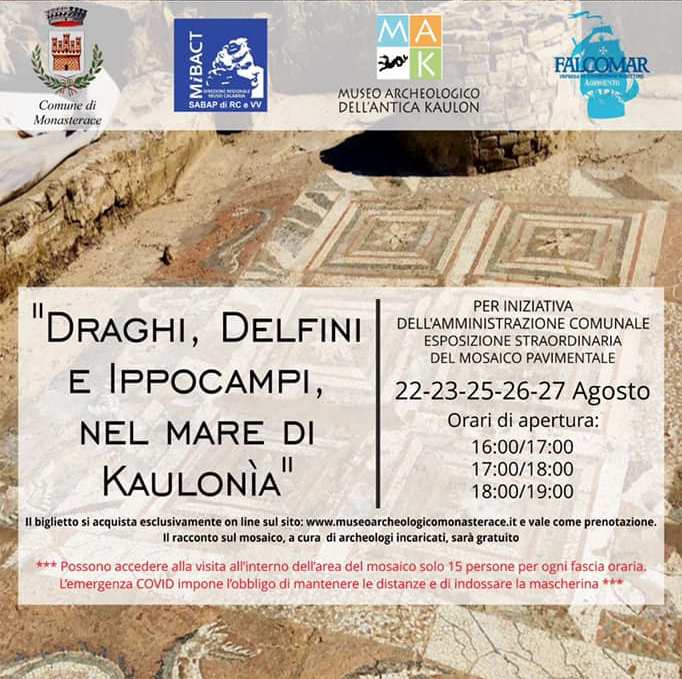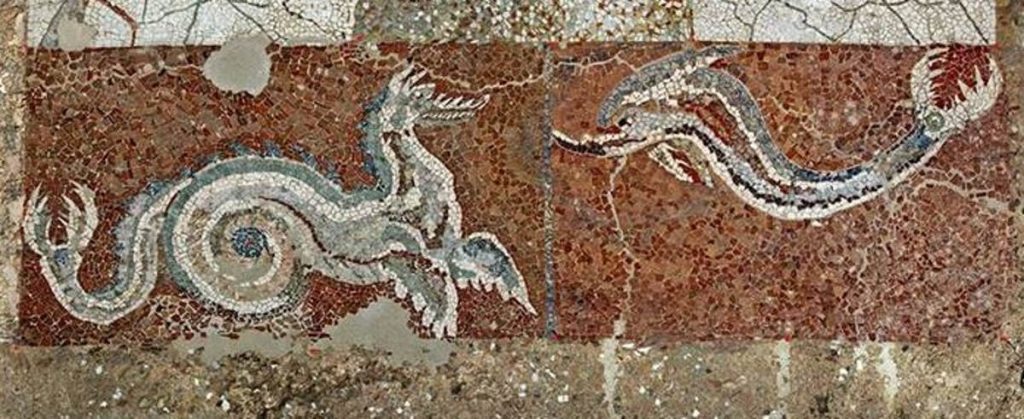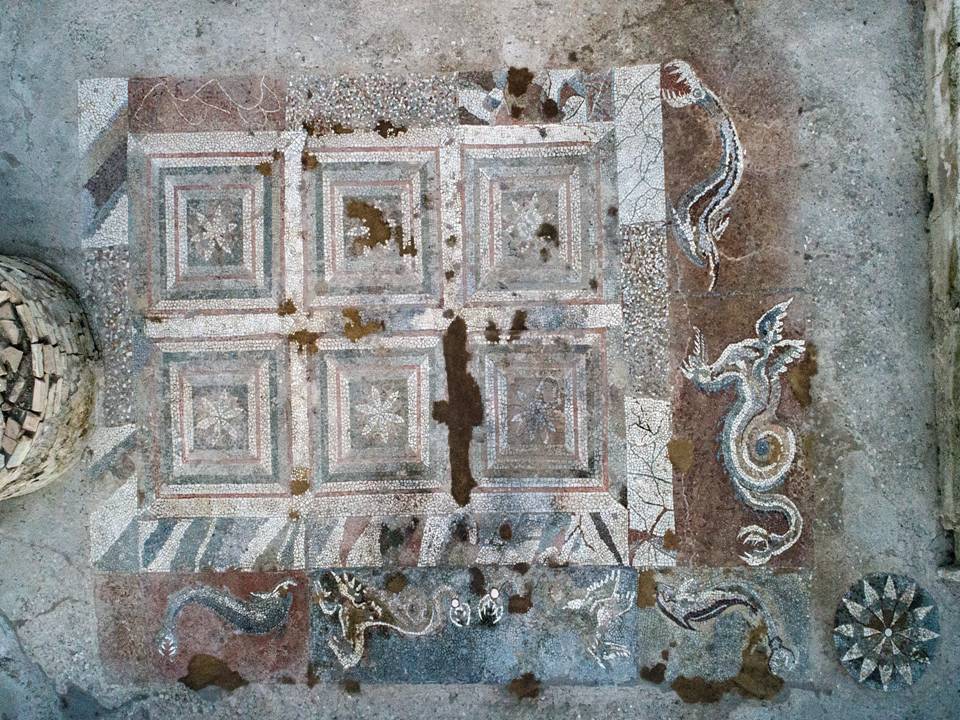The polychrome floor mosaic with dragons, dolphins and hippocampus will be open to visitors until August 31 at the Archaeological Museum and Park of ancient Kaulon (Caulonia), in Monasterace Marina, in the province of Reggio Calabria. Directed by Elisa Nisticò, the Museum is located around the “Paolo Orsi” Park, where the remains of the ancient city of Magna Graecia are kept.

Extraordinary event
The mosaic has already been open for a few days and upon reservation by groups of people. From the beginning of September the restorers of the Ministry of Culture, to ensure its protection and conservation, will take care to cover it again. It is therefore an extraordinary event, not to be missed, given the enormous historical and artistic importance that the artifact has.
Discovered in 2012
The mosaic of the "Hall of Dragons, Dolphins and Hippocampus" was discovered by the Archaeological Superintendency of Calabria. The discovery took place as part of an excavation campaign that investigated the so-called Baths of Nannon, conducted at the Park of the ancient Kaulon, belonging to the Regional Directorate of Calabria Museums led by the archaeologist Filippo Demma. The monument is of great value. Made with polychrome tesserae, it is of particular scientific interest due to its antiquity, the workmanship, the refinement of the figurative theme and its dimensions. It represents one of the most significant testimonies attributable to the Magna Graecia center of Kaulonìa, identified by the archaeologist Paolo Orsi in the early 900s.

Synergistic collaboration
The floor mosaic is therefore again visible. The numerous requests received by many visitors eager to see this important work of art up close, have been granted. This was possible thanks to the synergistic collaboration between the Polo Museale of Calabria, the Archaeological Museum of Ancient Kaulon, the maritime construction company Falcomar with Ignazio Aquilino, the Lions Club Monasterace-Kaulon and the ViviKaulon cooperative for the additional services of the Museum.
It can be accessed with the green pass
As part of the project that will allow visitors to appreciate the floor mosaic live, the Museum and Archaeological Park of ancient Kaulon will also propose other cultural initiatives. These include the two extraordinary openings on 21 and 28 August, to discover the numerous treasures preserved and exhibited within the structure. There will also be two more days of free guided tours, on 23 and 30 August (another took place on 16), led by industry experts. The covid emergency requires the observance of all those rules and procedures necessary to ensure that visits take place safely. Tickets can only be purchased online. The site can access 15 people at a time, equipped with a green pass. Here, an archaeologist in charge will provide all the historical information relating to the mosaic and the park.

Ancient thermal bath
The famous floor mosaic was discovered by the archaeologist Francesco Cuteri in 2012, completely brought to light the following year and restored in 2014. It is the oldest and largest mosaic found in Magna Graecia (dating back to the end of the XNUMXth century BC). The mosaics of the "Hall of Dragons, Dolphins and Hippocampus" occupy the central part of what was once a thermal bath of the Hellenistic age. This was preceded by another room, of pre-purification. The bathroom was a real sauna: after immersion in water, the lords of ancient Kaulonia sat on the benches and conversed in a dark, steamy environment. Here, the mosaics had a precise symbolic meaning. The dragon prevented evil from entering that place. The dolphin was seen as an ideal travel companion to face the difficulties of life. The hippocampus allowed the soul to free itself towards infinity.

The dragons of Kaulon
The dragon has become the symbol of the ancient kaulon. In addition to the one present in the aforementioned mosaic, there is another one (the sea dragon) discovered in 1968, also by Cuteri. It is depicted in a mosaic from the Hellenistic period that decorated the threshold of a luxurious house in the colony of Magna Graecia located near the current Monasterace. In this mansion, the mosaic floor features a marine wave frame. The dragon protected the entrance to what is now called the "House of the Dragon", of which he was considered the keeper.
(Photo: Ancient Kaulon Museum and Archaeological Park - DRM Calabria, Facebook page)





